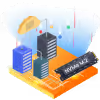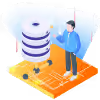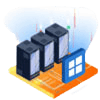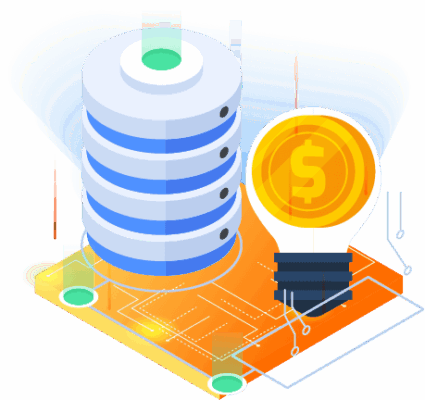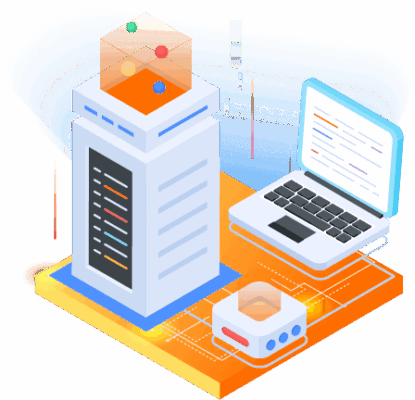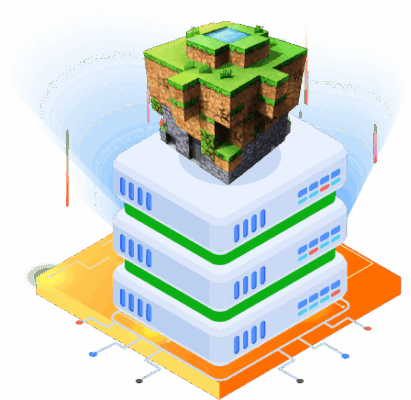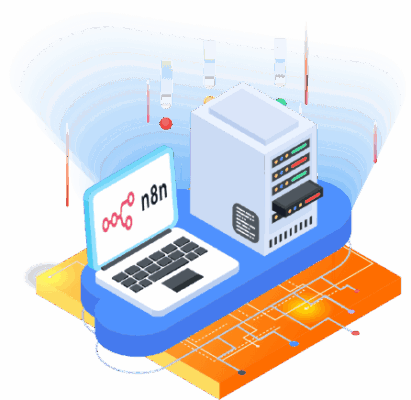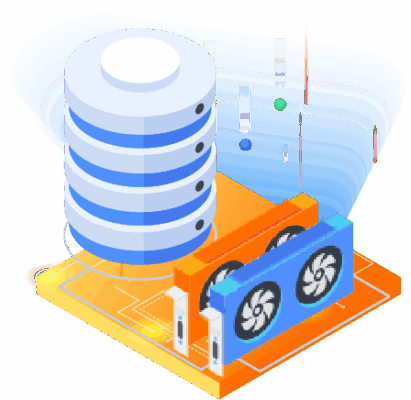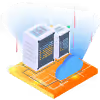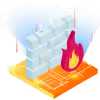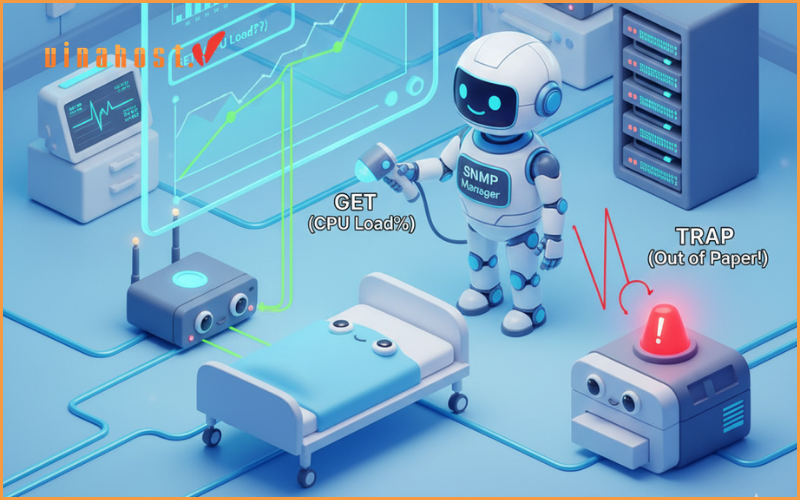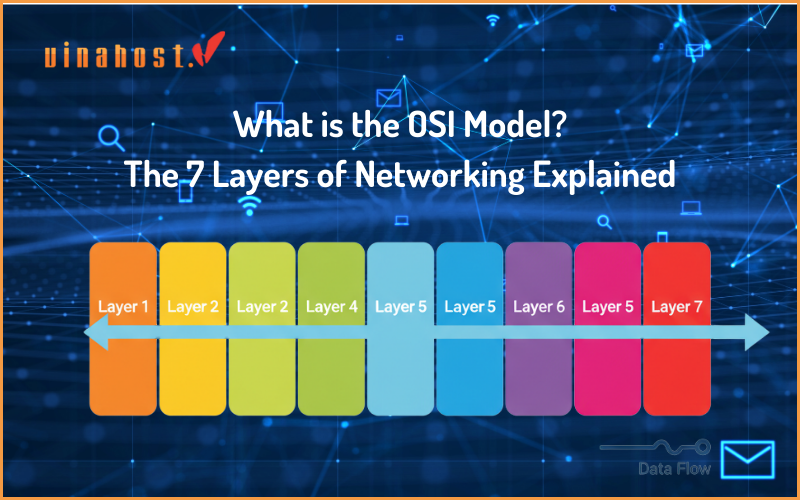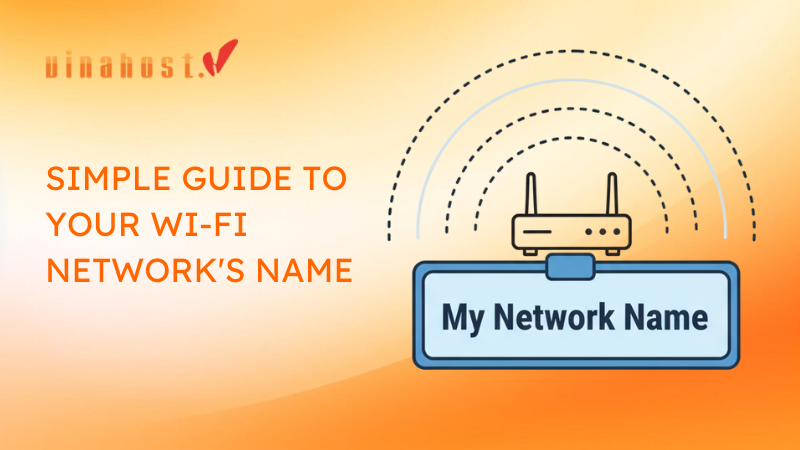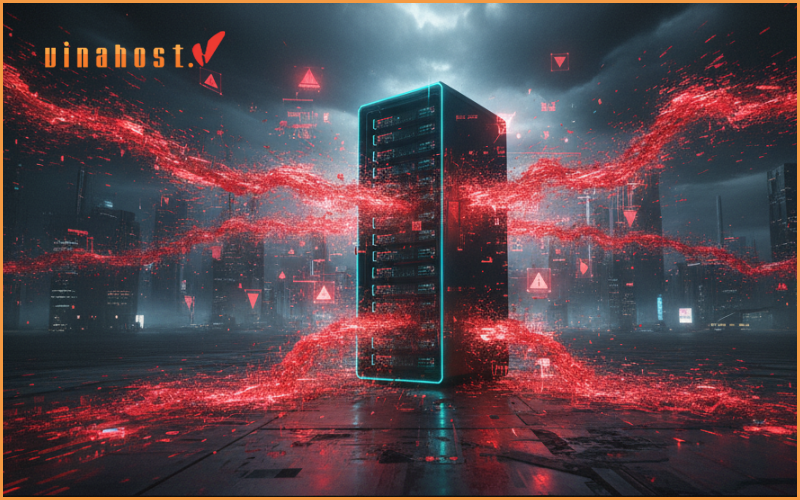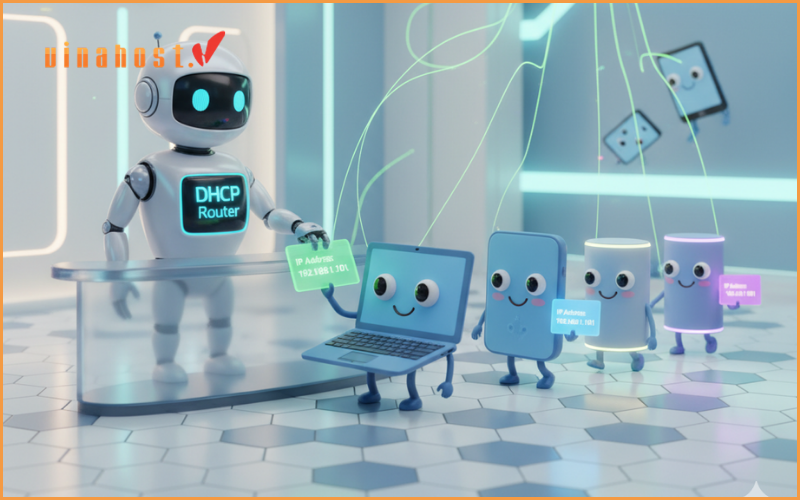What is a GPU server? On the modern digital front, GPU servers play a pioneering role in the field of computing technology. These are servers specifically designed to utilize the parallel computing power of GPUs (Graphics Processing Units), to enhance performance for complex tasks such as artificial intelligence training, simulation science and high performance computing. With outstanding speed and efficiency, GPU servers play an important role in fields from research and development to entertainment and finance. Let’s join VinaHost to learn information about GPU server through the following article.
1. What is a GPU Server?
A GPU server is a type of computer that uses a GPU card, which helps process data quickly and stably.
This type of server is very flexible and is used in many fields such as video encoding and decoding, deep learning and scientific computing. Thanks to their excellent image processing capabilities and high performance, GPU servers stand out in the market, especially because of their outstanding computing performance.
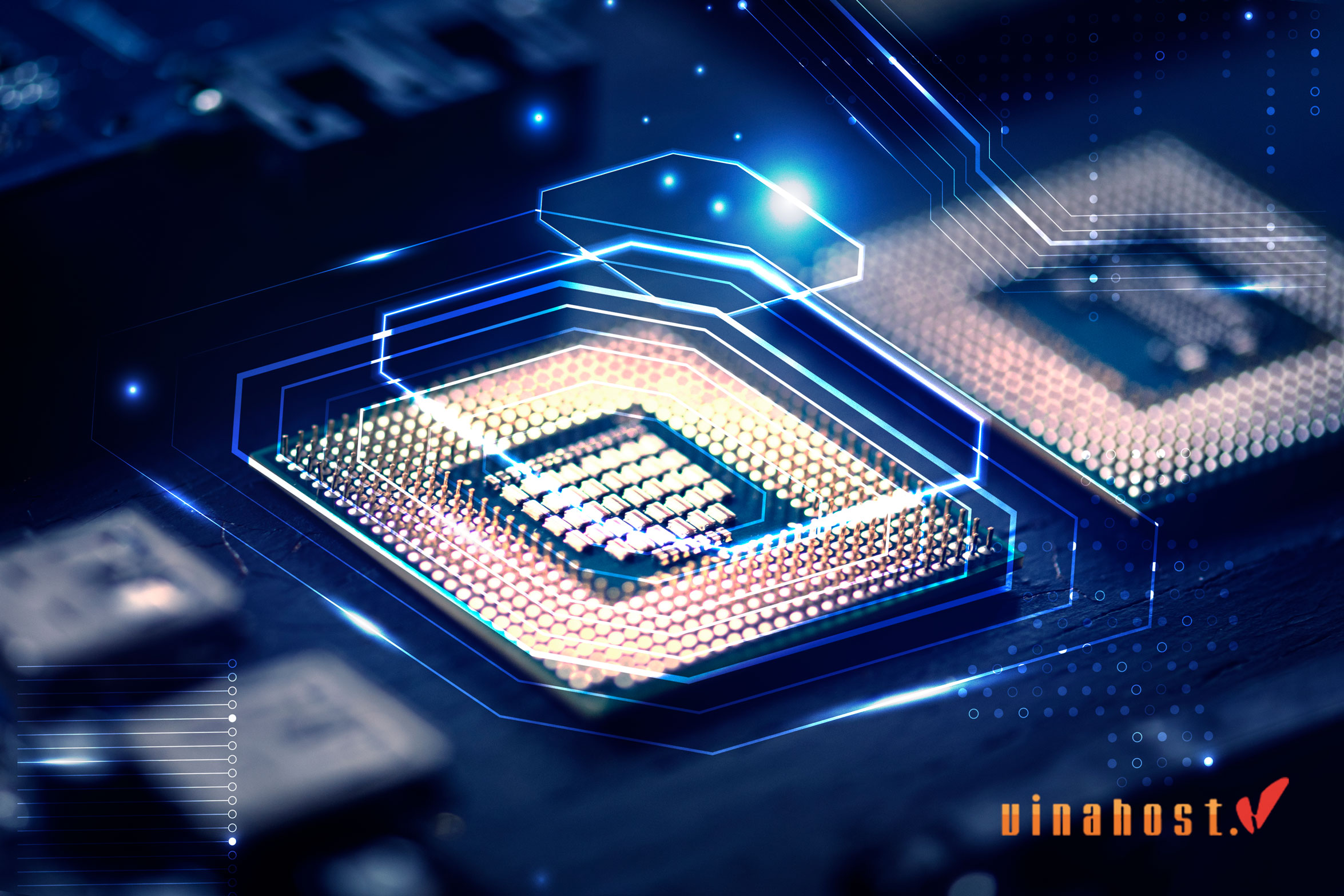
Also Read: What is a Server? Understanding the Backbone of Modern Technology
2. Components of a GPU Server
2.1. Central Processing Unit (CPU)
Even though the GPU is central, the CPU is still important for managing system resources and running programs that are not optimized for the GPU. Powerful CPUs like Intel Xeon and AMD EPYC help manage resources and execute code, making them an indispensable part of GPU servers.
2.2. Graphics Processing Unit (GPU)
The most important part of a GPU server is the graphics processor. These processors are capable of handling multiple tasks at once, making them well-suited for AI tasks that require a lot of complex calculations. Prominent examples of these GPUs are NVIDIA’s Tesla and A100.
2.3. Memory (RAM)
For a GPU server to operate smoothly in complex tasks, sufficient memory capacity is required. When looking at server GPU specifications, you need to pay attention to both RAM and VRAM (video memory).
2.4. Storage
Fast storage solutions like NVMe SSDs help reduce bottlenecks caused by slow data access speeds, which is important in complex computing tasks.
2.5. Networking
Components of a GPU server include networking hardware, which are critical devices that enable the server to communicate with external devices or other servers on the network. This hardware ensures efficient data transmission and connectivity, which is important for overall server performance and accessibility.
In addition to these basic elements, it is necessary to consider aspects such as cooling systems, adequate power supplies, and network connections designed for distributed computing configurations.
Also Read: What is a Cloud Server? | How does a Cloud Server work?
3. Who Needs a GPU Server?
GPU servers have high performance in handling tasks that require deep computation, suitable for many different applications as follows:
- Machine learning and deep learning: GPUs provide the multi-threaded processing capabilities needed to handle large data sets and complex algorithms in training deep neural networks, supporting leading machine learning frameworks.
- Data Analytics: With the ability to quickly process big data, GPUs help optimize big data analytics platforms like Apache Spark, Hadoop, and SQL for GPU-accelerated queries.
- High Performance Computing (HPC): GPUs provide powerful computing power that supports scientific simulations, weather modeling, and molecular dynamics research.
- Cryptocurrency Mining: GPU parallel processing is ideal for cryptographic decoding required in mining cryptocurrencies such as Bitcoin and Ethereum.
- Gaming and virtual reality (VR): With seamless performance and low latency, powerful GPU servers support high-quality graphics rendering in gaming and virtual reality applications.
These features make GPU servers a superior choice for many high-tech applications.
4. Benefits of Using a GPU Server
It provides many important benefits to businesses and various industries:
- Enhanced Compute Performance: GPU hardware significantly improves user experience and overall performance of enterprise applications and websites. Using GPU servers not only enhances operational efficiency but also enhances user experience, bringing significant benefits to businesses.
- Flexibility and stability: Whether using a cloud server or a physical server, customers can adjust the configuration and choose the server price to suit their specific needs. When renting or purchasing a server, customers can expect optimal speed, performance and security. In particular, cloud servers provide 24/7 continuous monitoring to ensure continuous availability.
- Task Management: It allows businesses to prioritize critical system operations or applications, while automating less critical tasks for the machine infrastructure owner.
- Artificial intelligence (AI) training support: For businesses that need detailed data analysis and automated processing, GPU servers are an important tool to accelerate development processes.
- Protection against DDoS attacks: Using GPU cloud server hosting helps keep your business operating environment safe and reliable. Modern technology is applied to prevent attacks and protect important data from loss.
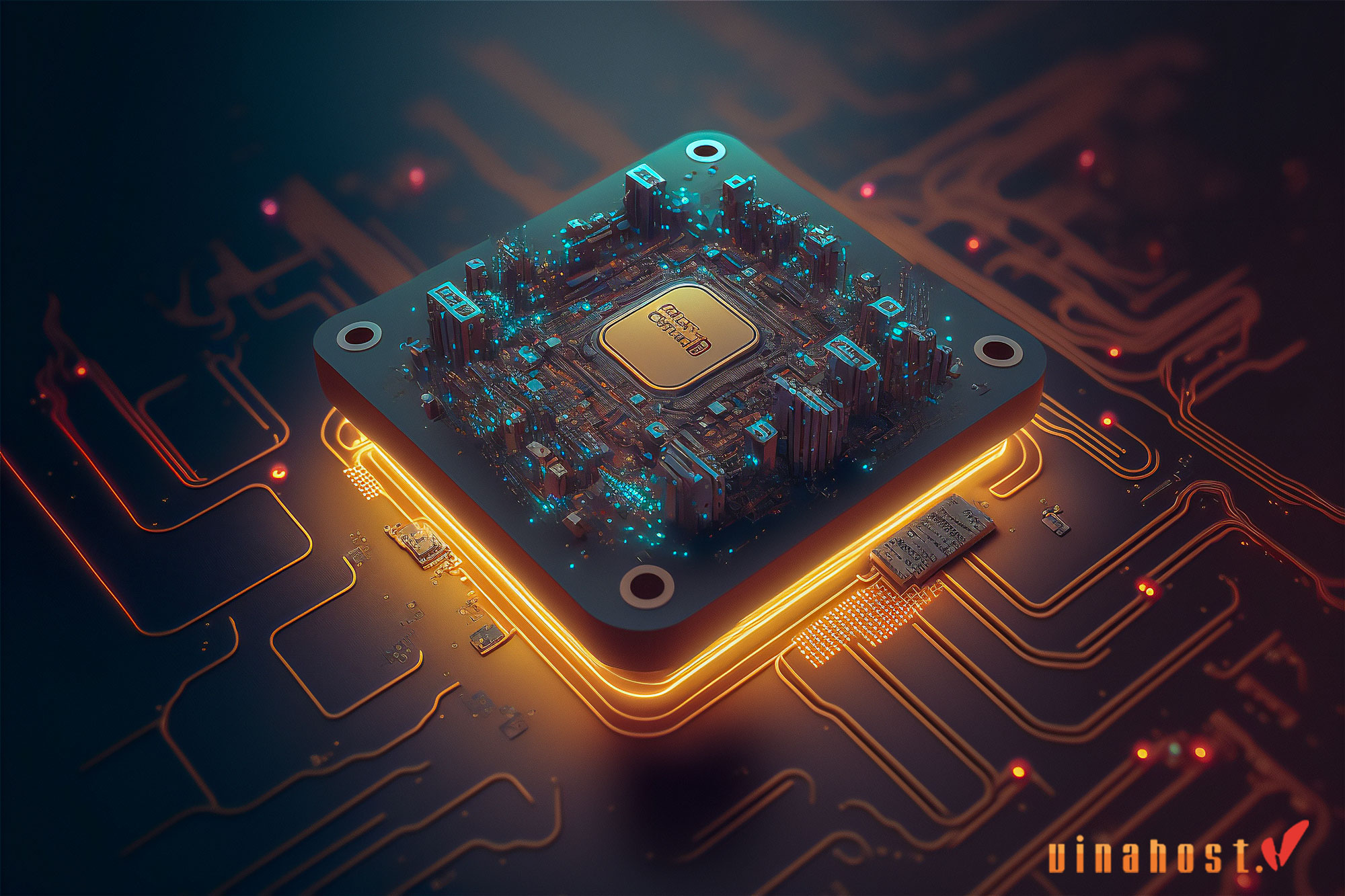
Also Read: What is VPS? | Unveiling the Power Behind Virtual Private Servers
5. The different Types of GPU Servers
There are different types of GPU servers, each designed to suit specific computing needs:
5.1. Tower Servers
These are standalone servers that resemble desktop towers. Suitable for small and medium businesses or individuals when space is not limited. Tower servers can contain GPU cards and other hardware components needed for special computing tasks.
Also Read: What is a Server Room? | Components of a Server Room
5.2. Rack Servers
Designed to be installed in standard server trays, helping to optimize space in the data center. Rack servers are scalable and suitable for organizations that need high computing power. Commonly used in scientific research, AI development, and financial modeling.
Also Read: What is Rack Server? | How does a Rack Server work?
5.3. Blade Servers
These are compact server modules that fit into a common chassis, sharing power, cooling, networking and management. Blade servers offer high density and are easier to scale than traditional servers. The GPU option on blade servers is well suited for environments that require extensive parallel processing capabilities such as infrastructure virtualization and cloud computing.
Each type of GPU server offers unique advantages based on scalability, space efficiency, and unique computing requirements, serving the diverse needs of businesses across a variety of industries.
Also Read: Maximizing Efficiency and Performance: What is Blade Server?
6. Choosing the Right GPU Server for Your Needs
To choose the right GPU server, you need to consider some of the following key factors, tailored to your specific needs:
6.1. Considering Workloads and Applications
First, clearly identify the main tasks and applications that the GPU server will perform. Different tasks, such as deep learning training, scientific simulations, or video rendering, require different levels of GPU computing power and memory bandwidth.
6.2. Number of GPUs
Determine the number of GPUs needed to meet performance requirements. Especially for tasks like AI training, multiple GPUs in a single server can greatly increase processing speed.
6.3. Memory Capacity
Evaluate RAM (system memory) and VRAM (GPU memory) requirements based on the size of the data set and the complexity of the calculations. Having enough memory capacity helps ensure smooth operation and minimizes data transfer bottlenecks.
6.4. Storage Requirements
Consider storage needs to process data and store results. Choosing a high-speed storage solution like an NVMe SSD will help minimize data access latency during heavy computing tasks.
6.5. Networking Bandwidth
Evaluates network connectivity to support large data applications and distributed computing setups. Using high-bandwidth networking options will be critical to efficiently transmit and share data in large-scale environments. By carefully evaluating these factors relative to your specific business needs and performance expectations, you will be able to select the optimal GPU server configuration that fits your business or research goals.

Additionally, we also provide:
7. The Future of GPU Servers
The need for high-performance GPU servers spreads across many different fields such as AI, machine learning, deep learning, big data processing, 3D rendering and streaming, playing an important role in the modernization process. It makes an important contribution by enabling efficient deployment of deep learning technologies, helping to optimize hardware requirements and expand performance capabilities. The result is reduced model training time, improved return on investment (ROI), and reduced total cost of ownership (TCO).
Deploying GPU servers in the cloud also facilitates the deployment of deep learning, where neural networks are trained to perform tasks such as speech recognition, image recognition, and prediction. This places great importance on server processing speed, especially for jobs that require real-time forecasting. Factors such as bandwidth, latency, and network reliability play an important role in ensuring optimal performance and cannot be ignored.
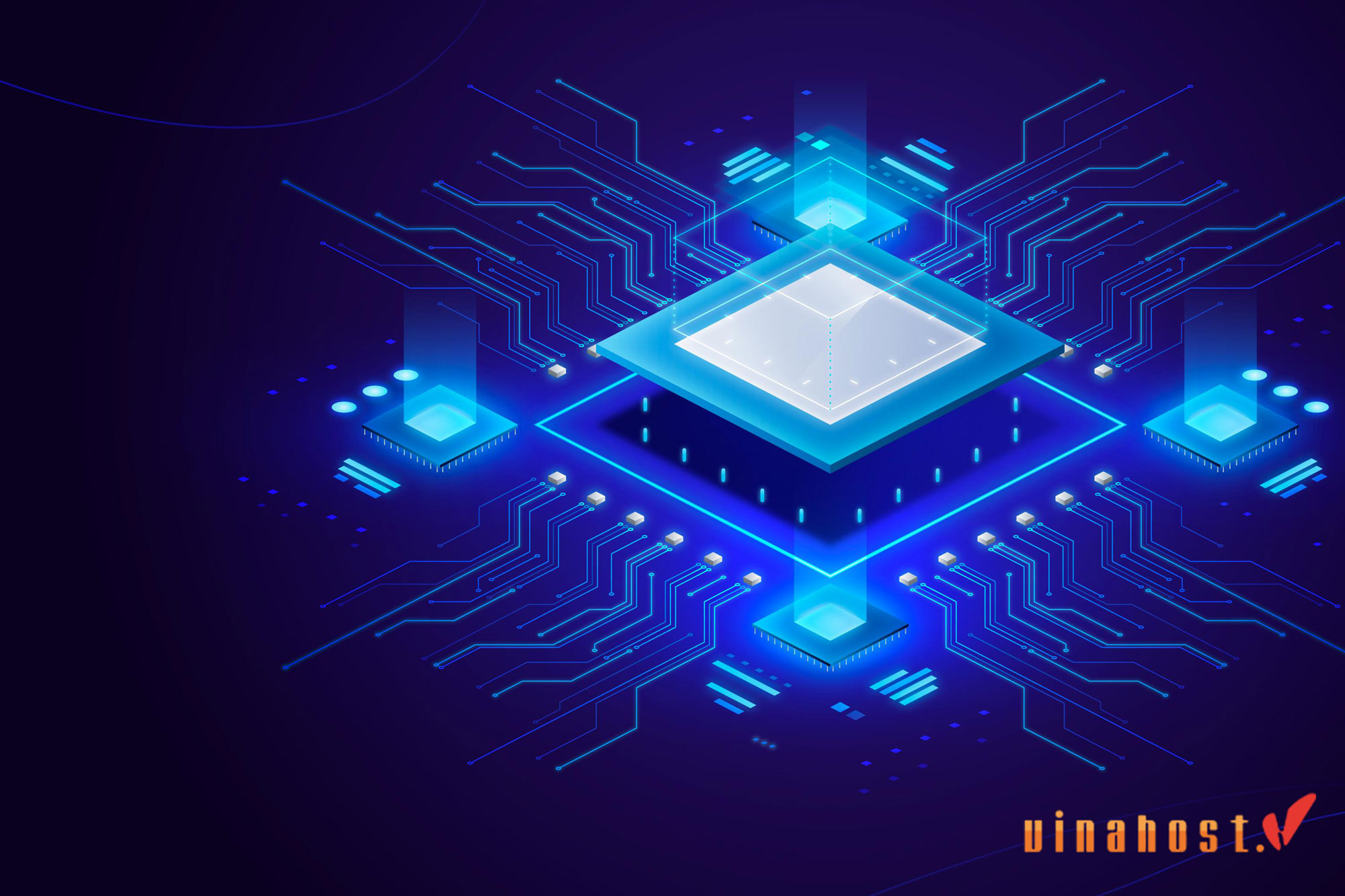
Also Read: What is a Dedicated Server? | How Does a Dedicated Server Work?
8. FAQs
8.1. Do I need a GPU server for my work?
To decide whether or not to use, you need to consider some of the following key factors relevant to your specific needs:
- Job Type: If your job involves tasks that require high computational power such as machine learning training, deep learning, 3D rendering, scientific simulation, or data analysis Large, it can be very useful. GPUs respond well to parallel processing tasks and can significantly increase calculation speed compared to conventional CPUs.
- Performance Requirements: Evaluate whether your current computer system meets performance expectations. If you experience slow processing or bottlenecks when working with large data or complex algorithms, a GPU server can provide the necessary performance boost.
- Budget and cost-effective: Consider the cost impact of purchasing and maintaining GPU servers. They are often more expensive than traditional servers because of special hardware requirements. Evaluate whether the investment fits your budget and will bring maximum benefits in terms of increased productivity and improved work efficiency.
- Future growth and scalability: Consider your forecasted needs and scalability. GPU servers are typically scalable, allowing you to add more GPUs or expand resources as business demands increase. If you expect your workload to grow over time, a GPU server may be the right choice to meet this need.
By carefully considering these factors, you will be able to decide whether a GPU server is right for your job and technical requirements, and whether it will meet your business goals.
8.2. What are the downsides of using a GPU server?
While GPU servers offer significant benefits for certain workloads, there are also some disadvantages to consider:
- Cost: GPU servers are typically more expensive than traditional CPU servers because special hardware is needed for GPU acceleration. The cost includes not only the initial purchase but also ongoing costs such as electricity and cooling, which can be higher due to the GPU’s higher power consumption.
- Complexity: Managing GPU servers can be more complex than CPU-only servers. This can be due to complexity from driver configuration, optimization for a specific GPU architecture, and efficient workload distribution across multiple GPUs if applicable.
- Limited compatibility: Not all apps are optimized to take full advantage of GPU acceleration. Some software may not benefit greatly from the GPU or require a specific version of the GPU driver to function properly.
- Thermal and cooling requirements: GPUs generate more heat than CPUs during intensive calculations, requiring a powerful cooling solution. This can lead to higher operating costs and increased complexity of maintaining GPU server infrastructure.
- Training and expertise: Effective GPU server deployment and management requires specialized knowledge and skills, both in hardware configuration and software optimization. This can require high initial training time and costs, along with ongoing maintenance requirements.
Despite these weaknesses, GPU servers are still essential for jobs that benefit from parallel computing and high throughput, such as AI training, deep learning, and scientific simulation. Evaluating these factors based on your specific workload and requirements will help determine whether the benefits of using a GPU server outweigh the potential drawbacks for your use case.
8.3. Can I rent a GPU server instead of buying one?
Of course! You can rent a GPU server instead of buying one. Renting a GPU server, also known as GPU cloud server, is a popular choice for many users and businesses with some of the following benefits:
- Cost Savings: You only pay for the computing resources you use, usually by the hour or monthly. This can save costs compared to purchasing and maintaining specialized hardware, especially for oscilloscope or project use.
- Flexible and scalable: Cloud service providing GPU server allows you to flexibly configure, choose GPU type like NVIDIA Tesla and expand resources easily. You can scale up or down according to current needs without investing in hardware up front.
- Remote Access: GPU cloud services are accessible from anywhere with an Internet connection, allowing for remote management and use of this powerful resource. This is especially useful for distributed teams that need to access the GPU without getting close to the physical server.
- Maintenance and support: The cloud provider is responsible for hardware maintenance, upgrades, and support, reducing pressure on your IT staff. This includes ensuring server availability, providing security patches, and updates to GPU software and drivers.
Popular providers of cloud services that offer GPU servers include Amazon Web Services (AWS) with EC2 instances (e.g. P3 instances), Google Cloud Platform (GCP) with NVIDIA Tesla GPUs, Microsoft Azure with NV -Series VMs and many other options.
8.4. Are GPU servers expensive?
Of course! GPU servers can be more expensive than traditional CPU-only servers. The cost of a GPU server mainly depends on the following factors:
- Hardware Cost: GPUs are typically more expensive than CPUs because they have a specialized architecture designed for multi-threading. High-end GPUs like NVIDIA Tesla or AMD Radeon Instinct can significantly increase the initial cost of a server.
- Energy Consumption: GPU consumes more energy than CPU, especially when running heavy computing tasks. This results in higher electricity costs and may require a more powerful cooling system to maintain ideal operating temperatures.
- Maintenance and support: GPU servers may require specialized maintenance and support due to the complexity of GPU hardware and software configurations. This can add costs with activities such as updates, driver installation, and troubleshooting.
- Deployment and scaling: Setting up a GPU server infrastructure, whether on-premises or in the cloud, involves initial deployment costs. Scaling the number of GPUs or adding servers to meet growing compute needs can also increase this cost.
Despite their higher cost, GPU servers are still absolutely essential for jobs that benefit from multi-threaded processing and high compute, like AI training, deep learning, scientific simulation, and rendering.
9. Conclusion
So what is a GPU Server? GPU servers represent a significant advancement in computing power, bringing unprecedented speed and efficiency to industries. From improving artificial intelligence to revolutionizing scientific research and many other applications, their role in modern computing is indispensable. With the continued advancement of technology, GPU servers will undoubtedly continue to lead the way in innovation, driving new capabilities and pushing the boundaries in data-intensive and compute-intensive applications. Using GPU server technology helps organizations stay competitive in an increasingly data-driven world.
Find out more articles at our Blog and don’t hesitate to contact us for support:
- Email: support@vinahost.vn
- Hotline: 1900 6046
- Livechat: https://livechat.vinahost.vn/chat.php
What is Windows Server? | Features of Windows Server
What is an Application Server? | How Application Server work?
 Tiếng Việt
Tiếng Việt English
English 简体中文
简体中文

















